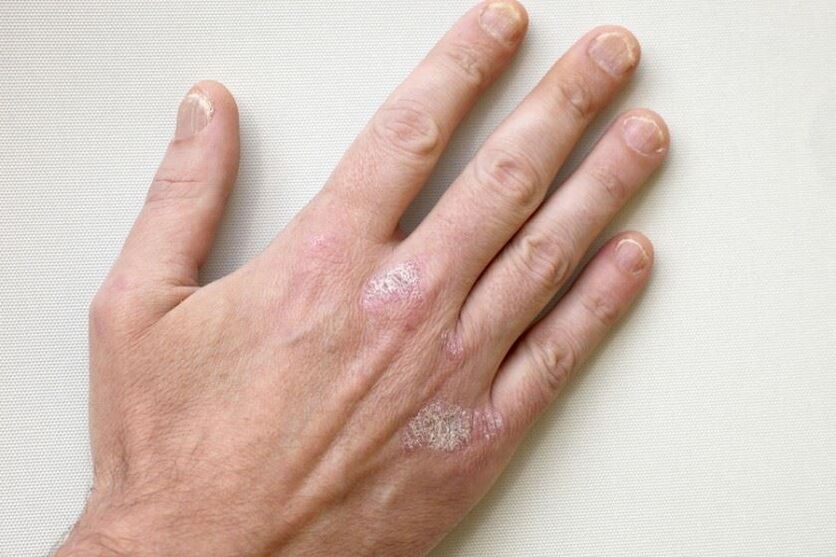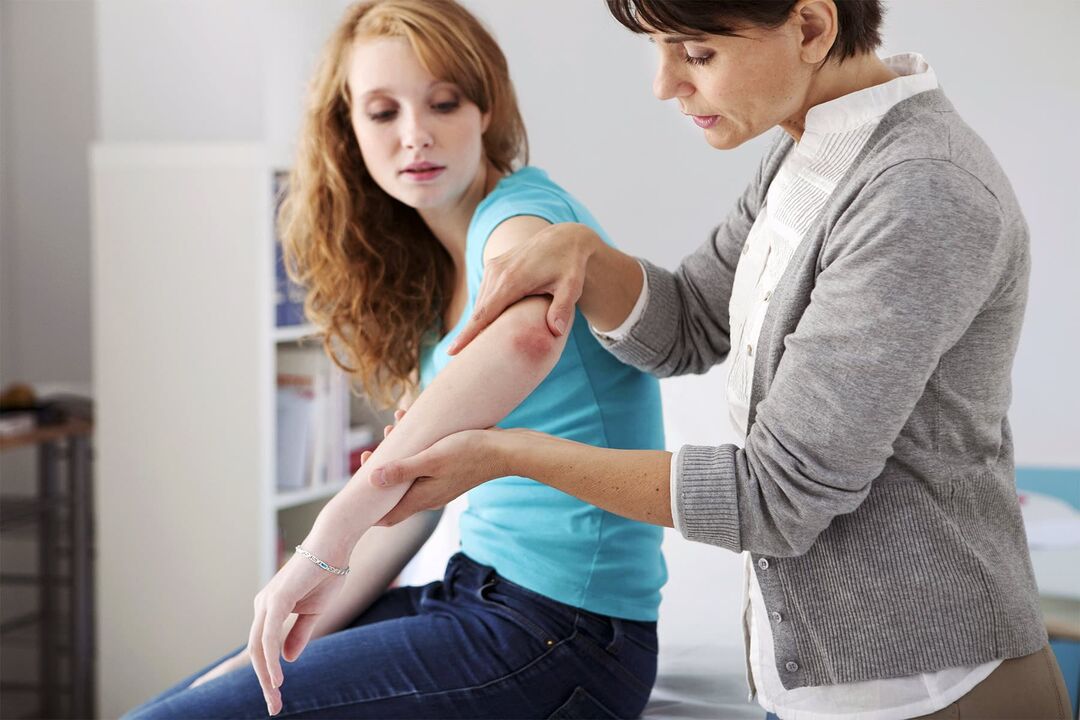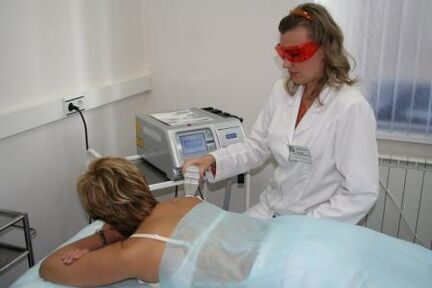In recent decades, dermatology has become increasingly interested in cases of psoriatic dermatitis. Statisticians note that these cases most often affect people with light skin. And although experts have not yet set an age limit for the endemic disease, nevertheless the most active phases of the disease are recorded precisely between 15 and 45 years old. In terms of prevalence, psoriasis can now affect 25 people on the planet, which generally represents, according to the WHO (World Health Organization) for 2016, approximately 4. 2% of the total world population.
What type of disease is psoriasis and what external signs does it present?
The name of such a sore was given based on its characteristic external sign - red plaques and papules with scales, which are formed as a result of a rash accompanied by a feeling of itching and soreness. inflammation of the skin. Psoriasis disease is also called scaly lichen and has its own fairly comprehensive classification of types, symptoms and causes that provoke the onset, progression and exacerbation of the disease. The general picture of pathology today is such that it does not give doctors a clear idea of its unambiguous origin and methods of treatment. This is why doctors must find ways of partial healing with the patient.
The definition of what psoriasis is today is accepted by all specialists as a non-infectious disease that appears mainly for various reasons, and it must be treated carefully, extremely carefully, under the constant supervision of several specialists, andnot just from a dermatologist. The word psoriasis itself means "itch" (from the Greek term "psora"), "scabies" (from the English term, which is also written "psora"). Diagnosis of the disease is carried out comprehensively, not just through skin tests or blood tests.
Further information:The specificity of the disease, which has not been fully studied, is such that patients should prepare for persistent, persistent and long-term recovery, as well as for the alternation of periodic exacerbations with remissions, stagesof relief, which lasts from several weeks to several years.
Classification of types of psoriasis

When experts want to determine exactly psoriasis in a sick patient, what are these rashes and the unbearable desire to constantly scratch the sores, what type of disease the disorder belongs to, what the patient suffers from, then experts can focus ona special classification of diseases. Besides, she is not alone, there are at least four of them today, who should be reviewed briefly to get a general idea.
According to ICD-10
According to the International Classification of Diseases in the 10th revision, these dermatitis are divided into the following types:
- Ordinary or plate-shaped. Prevalence – 90-95%. Manifestations – papulo-scaly structures of gray, white and pink hue. As they grow, entire "islands" and "lakes" of diseased skin form.
- Generalized pustular or "Impetigo", "Tsumbusha" disease, exudative. It starts with blisters and blisters containing fluid (exudate). After bursting, ulcers and autoinfection form.
- Persistent epidermal disorder or allopo, Setton's or Crocker's acrodermal disorder. The fluid or pustular formations of plaques and papules are sterile and do not present generalized self-contamination. Nails and fingers are often affected.
- Palmar and plantar lesions. Small ulcers on the palms and soles of the feet that are not autoinfectious. It is very difficult for the patient to have quality of life when walking and working with their hands.
- teardrop shaped. Small purple, pink and gray dots on the body most often begin to appear after severe sore throat, streptococcus, pharyngitis and other infectious viral diseases.
- Arthropathic appearance. Damage to the joints of the fingers, hands, knees and lower legs. Prevalence – 10% of all psoriatic patients.
- Other, inverted and unspecified. Smooth spots with a low percentage of flaking that appear on delicate areas of the skin.
According to this classification, which reveals the essence of what this or that type means, what a disease is, what psoriasis is, the pathology is assigned a special code - L40. Different numbers can be added to this code to indicate a specific type of disease.
According to clinical parameters
The disease can also be classified according to clinical criteria, which are expressed as follows:
- by location – body parts are designated;
- according to clinical pictures - the nature, texture of psoriasis;
- in progressive stages - progressive, stationary, regressive disease;
- according to the manifestations of a particular season;
- by skin area - less than 20% of the epidermis is affected, more than 20% or all of the skin.
According to the American classification
The American National Foundation, when defining psoriasis, what kind of disease it is, its type, classifies it in the following order:
- mild skin lesions - less than 2%;
- average severity of spread – from 2 to 10%;
- severe stage of skin lesions - from 10% and above.
According to the PASI index
Another international approach to defining psoriasis sores, which is in the arsenal of medical diagnosticians, distributes the types of diseases according to the following principle:
- the presence of the PASI index varies from 0 to 72 values;
- the index shows the severity of the dermatitis;
- Only specialists calculate the index.
Doctors can use any of these classifications to determine the type of disease, but practice shows that it is the ICD-10 system that is most actively used. Without a precise definition of the type, it will be difficult for doctors to understand what type of disease it is and how to treat it.

General symptoms
All doctors and researchers are convinced that psoriasis is not a contagious phenomenon and that it cannot be transmitted from an affected person to a healthy person. Characteristic pustular and scaly rashes are called papules if their formation was initially a swelling of fluid, which subsequently burst, leading to a sore, drying of the cover and scales. "Papule" from lat. means "knot". But if the redness was not watery, their swellings above the surface of the skin were compacted, then they turned into sores from constant scratching, suppuration and the formation of scales, then we are talking aboutplates.
Note!Psoriasis is a disease that always presents scaly formations above the surface of the affected skin. "Squama" from lat. means "scales", the diagnosis can therefore be written on the line of the examination sheet: "papulosquamous disorder of the epidermis".
Symptoms of psoriasis
When defining psoriasis, we focus on its symptoms, which can be represented by the following unified list of manifestations:
- Papules are swellings above the surface of the skin that contain infectious or sterile fluid inside.
- Plaques are red spots that grow and become infected over time.
- The plaques may be gray, reddish, yellowish or dotted with purple.
- The surface texture of diseased skin ranges from moist, pustular, to dry with scales.
- Peeling and peeling are characteristic of all types of disease.
- The general condition of the patient ranges from irritability, nervousness to drowsiness, fatigue and apathy.
Stages and degrees of development of psoriasis
The steps not only show the characteristics of psoriasis disease type and its types, but also can tell the doctor how to deal with the disease. Generally divided into 3 stages.
Weak stage
- papules and plaques are rare and solitary;
- there is no unbearable itching;
- There is no serious swelling yet;
- often appears after experiencing stress or a serious infection.
Intensive course
- defined as Koebner syndromes;
- lesions appear unexpectedly in different parts of the human body;
- fusion and growth of papules and plaques to form entire "paraffin lakes";
- pain and itching are typical during this period.
Exacerbation of the disease
- scale shape;
- dry skin;
- lesional rashes no longer develop;
- scales fall off;
- the skin hurts;
- the thickness of the skin where the plaques are located increases.
For reference:remission is a separate stage and is considered a calming of the pathological condition.
Causes that provoke the appearance of the disease
Despite the fact that no answers have been found to the questions of what kind of disease psoriatic dermatitis is and what are the reasons for its occurrence, nevertheless, certain prerequisites are naturally already demonstrated that can provoke the appearance of thedisease.
Such patterns show the following probable reasons:
- Hereditary predisposition.
- Weak immune system.
- Recently experienced serious psychological trauma, exposure to an infection, a virus.
- Side effects of medications.
- A sudden change in climatic living conditions.
- Allergies in humans.
- Imbalance of the gastrointestinal tract, endocrine, excretory and cleansing systems.
- Slow metabolism (metabolism) due to a sedentary lifestyle and poor diet, poor sleep and wakefulness.
Important!The sore can appear even after a severe sunburn, constant rubbing of synthetic fabrics of clothing in areas of the body where the skin folds. Even excessive consumption of poor-quality food (with an abundance of chemicals, preservatives, synthetics), alcohol, drugs (toxic substances) or tobacco can cause an exacerbation. All this was recorded by the exclusion method - for example, when the patient was prevented from bad habits, his condition improved.

Diagnosis of psoriasis – what is it?
If people who are wondering about psoriasis, what it is and which doctors they should contact, have already discovered similar symptoms in themselves, or in their relatives, friends, they should immediatelyfirst contact a dermatologist. After that, an examination will be scheduled, in which a number of other highly specialized specialists can participate:
- histologists – studying blood cells in this case;
- immunologists - identifying the cause of the body's weakened resistance to viruses;
- endocrinologists - in case of suspicion of disturbances in hormonal levels and the functioning of the endocrine system;
- infectious disease specialists – detecting the presence of infections or viruses in the human body;
- nutritionists who will determine appropriate nutrition for the patient and other specialists.
Diagnosis is carried out using the following mechanisms and techniques:
- External examination of affected skin areas.
- A blood test will allow you to know if the joints are affected by the disease.
- A biopsy reveals the stage and verification (diagnosing a specific type of disease).
The Internet alone is not an aid in determining the specific type of psoriasis. In addition, encyclopedic reference books are usually filled by all Internet users, regardless of whether they are familiar with the specifics of the disease or not.
Note!A biopsy is one of the main diagnostic procedures in which a piece of affected skin is removed for laboratory examination. Its results show the level of T lymphocytosis, which cells are strong and which are weak.
Difficulties in the life of patients with psoriasis
When a patient first encounters psoriasis and does not know what type of disease has appeared to him, he tends to experience the following conditions that accompany the course of dermatitis:
- depression;
- inferiority complexes;
- difficulties in the social sphere - people, out of ignorance, often believe that the disease is contagious and stop communicating with the sick person;
- cardiovascular disorders - sometimes even heart attacks;
- pressure imbalance – hypertension;
- diabetes mellitus – type 2 is particularly common;
- you must limit yourself in food and drink;
- you need to adapt to an active lifestyle, which is extremely difficult to do when your psychological mood is depressed;
- physical discomfort - difficulty wearing clothes, showering, bathing, moving arms, legs, sleeping, etc.
In the same way, all this affects patients who have not faced the disease for the first time, but are already mentally prepared to face it and work hard to reduce its intensity.
For reference:remissions (stages of attenuation of the disease) can last for several years only with a competent therapeutic approach and the prescription of treatments, methods, methods.

Methods for treating psoriasis
When the doctors themselves do not fully know all the reasons for the exacerbation of the disease and how all this can be eliminated forever, this also greatly affects the mood of the patient himself. But you just need to convince yourself that if the disease cannot be cured, then you can improve your quality of life for several years. Therefore, psoriasis should be cured only with an integrated approach of all practices, methods and methods available in nature. Even doctors do not disdain folk remedies, provided that the patient first discusses one method or another with the doctor.
Traditional methods
As soon as they determine the type of dermatitis - psoriasis is also dermatitis, what kind of disease it is, its type, doctors immediately begin specific procedures that are supposed to give a positive effect in the end.
Treatment begins with the following procedures:
- Affected areas are disinfected to avoid self-infection.
- Mandatory relief of inflammatory processes with medications.
- The plaques need to be resolved and special medications are prescribed for this purpose.
- The same goes for the scales - so that they do not fall off painfully, they are softened with lotions, applications with various softening ointments, tinctures, mixtures.
- Injections and tablets are prescribed - for example, an immunosuppressant, which restores the functioning of the immune system while improving the psychophysical state.
- They use ultraviolet irradiation, purify blood by plasmapheresis and other methods.
- Sanatorium treatments with mud and salt water. For example, resorts in Israel on the Dead Sea. The method is not cheap, it must take 28 days, but it is 100% effective.
- Take salt and herbal baths.
- Special diet, exercise.
In addition to the above methods, operations are also performed on the valve of the small intestine, which is responsible for cleaning the system. Usually, after such operations, patients feel better up to 5-6 years in advance.
Important!The basic drug will always be an antimetabolite from the group of structural analogues of folic acid, which is supplied to the body by intramuscular injection.
Traditional medicine for psoriasis
The disease can also be treated by traditional methods, as certain plants, seeds and fruits have their own medicinal properties. This is an economical option for those who cannot enjoy visits to the resort. At home, you can prepare medicinal baths yourself, prepare various ointments based on Kalanchoe, honey and other compounds. Only the patient must always consult their doctor beforehand. Here you also need to follow a strict diet, sleep, work and exercise.
Additional measures
Any attending physician will always prohibit the patient from exposing themselves to the sun for more than 6 hours a day for 2 tanning sessions. At the same time, the sun should not be at its zenith and burn strongly, otherwise you can only cause burns and aggravate the situation. In addition to sun exposure, psoriasis can also be cured temporarily by adding a special diet. The Pegano diet is currently the most widespread system. In addition, you need to remove all the usual whims, such as tobacco, alcohol, an abundance of sweets and other hobbies.
Further information:It is not recommended to embark on a brutal diet. In addition, you should always think about your intestines, which need to be helped by the presence of fiber and sunflower oils. Therefore, you can eat sunflower seeds and add various permitted fiber-rich foods to your dishes.
5 preventive measures for people predisposed to psoriasis
So that a person does not have questions about psoriasis - what kind of disease it is and how to treat it, it is also worth listening to several expert recommendations on how to protect yourself as much as possible from'such a disease. Pay attention to this list of 5 basic recommendations, even if you have no predisposition to this type of disease:
- Protect yourself from various infections, dress warmly, do not catch a cold, create the most positive attitude to life.
- Move actively, maintain normal nutrition, sleep and wakefulness.
- Give up all bad habits or hobbies like baking, sweets, which contain a lot of sugar.
- Wear clothing primarily made from natural fiber fabrics.
- Any painkillers or other medications should be taken in consultation with a doctor and not as self-medication.
For reference:slow metabolism leads not only to psoriasis, but also to obesity, liver disease, kidney disease, heart disease and other dysfunctions. Therefore, reducing carbohydrates in your menu, more walks in the fresh air and physical exercise will help everyone to always stay healthy!
There is no complete cure for this disease yet; specialists are identifying the causes as some cases of psoriatic disorders are recorded. Therapeutic procedures are very long, drawn out and difficult. The patient will need not only a change in lifestyle, but also self-observation and keeping a diary in which he will record all his conditions. Therefore, any delay in communicating with doctors will only make the situation worse. Patients should not torment themselves like this, be afraid to show themselves to doctors, it is better to immediately start looking for a solution to the problem than to accumulate it like a snowball.























